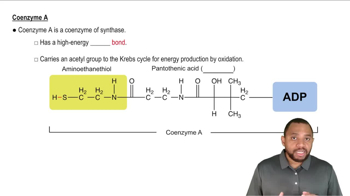Does the enzyme described in each of the following statements require a cofactor to be active?
c. The presence of K+ does not affect the reaction.
 Verified step by step guidance
Verified step by step guidance Verified video answer for a similar problem:
Verified video answer for a similar problem:



 2:39m
2:39mMaster Intro to Cofactors Concept 1 with a bite sized video explanation from Jules
Start learning